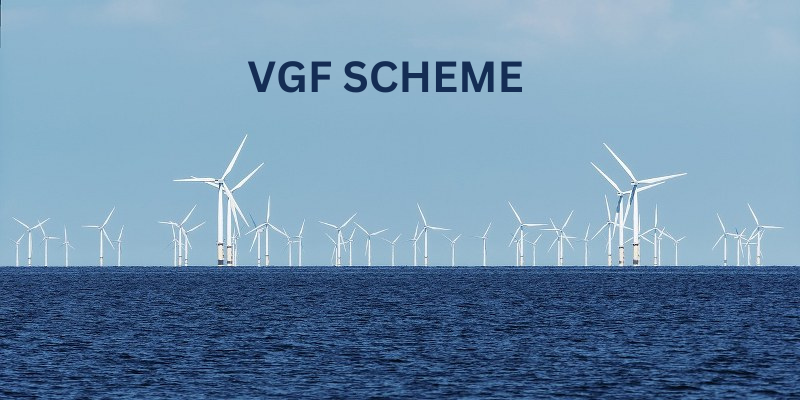VGF (Viability Gap Funding) Scheme is a financial support mechanism designed by the Government of India to encourage Public-Private Partnerships (PPPs) in infrastructure projects that are economically justified but may not be financially viable due to their long gestation periods and high initial capital costs. The scheme aims to attract private sector investments in such projects by providing financial support to make them viable and ensure their completion.
Key Features of the VGF Scheme:
- Objective:
The primary objective of the Viability Gap Funding scheme is to provide financial assistance to infrastructure projects where the private sector is involved, ensuring their viability and timely completion. - Eligibility:
- Projects must be implemented under the Public-Private Partnership (PPP) model.
- They should be economically justified but fall short of financial viability.
- Eligible sectors include roads, railways, seaports, airports, power, water supply, solid waste management, and other physical and social infrastructure sectors.
- Funding Structure:
- Viability Gap Funding support is typically provided as a capital grant at the construction stage.
- The grant can cover up to 20% of the total project cost.
- In certain cases, an additional grant up to 20% of the project cost can be provided by the sponsoring ministry, state government, or statutory entity.
- Implementation:
- The scheme is administered by the Department of Economic Affairs (DEA), Ministry of Finance, Government of India.
- Projects seeking Viability Gap Funding support must be approved by the Empowered Institution (EI) and the Empowered Committee (EC) set up for this purpose.
- Process:
- Project proposals are submitted to the DEA.
- Proposals are evaluated based on their economic and financial viability.
- Approved projects receive VGF support, which is disbursed in proportion to the progress of the project.
Benefits of the VGF Scheme:
- Encourages Private Investment:
By reducing financial risks, the scheme attracts private sector investments in infrastructure projects. - Infrastructure Development:
Facilitates the development of critical infrastructure, contributing to economic growth and development. - Risk Sharing:
The financial burden and risks associated with large infrastructure projects are shared between the government and private entities. - Improved Project Viability:
Ensures that economically important but financially unviable projects are completed.
Examples of VGF Scheme in Action:
Several infrastructure projects in India have benefitted from the Viability Gap Funding scheme, such as:
- Road Projects: Several national and state highway projects have received Viability Gap Funding support, leading to improved road connectivity.
- Airport Development: Airports in smaller cities and towns have been developed with VGF assistance, enhancing regional connectivity.
- Urban Infrastructure: Projects related to water supply, sewerage, and solid waste management in urban areas have been made viable through VGF support.
The VGF Scheme plays a crucial role in bridging the viability gap for infrastructure projects, ensuring that they are not only economically sound but also financially feasible. By attracting private sector investments, the scheme helps in the timely completion of essential infrastructure projects, thereby contributing to the overall economic growth and development of the country.
Also Read: FAME.3, What is FAME III Scheme? The Future of Electric Vehicles in India, विस्तृत जानकारी एवं सम्पूर्ण समाधान, Jio Networks: A Fusion of Modernity and Advance Networking Technology, Jio Fiber Jio 4G&5G, JioAir, JioVolte

